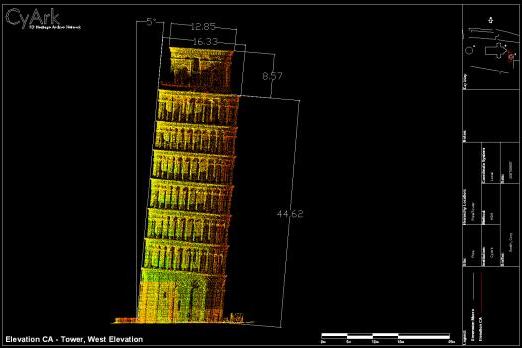The reason is that the leaning tower of Pisa is built on unsuitable ground for such a heavy and tall building. It is only about 2 meters above sea level and built on a riverbed. The underlying grounds are made up of uneven layers of sand and clay. Because the layers are not even, as the ground has compressed, it has sunk more in some places than others.
Several plans have been tried over the years to prevent the leaning tower of Pisa from falling. In 1934, an Italian engineer drilled 361 holes into the base and fill them with mortar. The tower promptly leaned over some more! In 1995, officials decided to increase the foundations under the Southside of the building.
They started to remove stones, so they could insert metal rods. What they didn’t know was that the stones they were removing were part of the original foundation of the building. As a result, in one night the lean increased as much as it normally increases in two years!

At this point, everyone was just about ready to give up. Then a British engineering professor came up with yet another idea. His plan was to remove the ground from under the high side, instead of trying to add ground under the low side. In 1999 work began, and was done very slowly, so that the building wouldn’t get a sudden shock. At the beginning of June 2001, the work was complete, and the tower had been straightened up by an out 16 inches. The engineers now believe that it is safe for at least another 300 years.
Even though steps have been taken to prevent the lean from increasing, no one wants to strengthen the tower either. Do you know why? It is the Leaning Tower of Pisa and just wouldn’t be the same if it didn’t lean.
Recommended: Why doesn’t the Leaning Tower of Pisa fall over? – Alex Gendler
Why is the Leaning Tower of Pisa so Important?
The Leaning Tower of Pisa, Italy, is famous simply because it leans! It is actually the bell tower of the cathedral of the city of Pisa. Although it was designed to stand straight, the tower began leaning to the southeast soon after the onset of construction in 1173.
Construction was subsequently halted for almost a century because the Pisans were almost continually engaged in battles with Genoa, Lucca, and Florence. In 1272, construction resumed. In an effort to compensate for the tilt, the engineers built higher floors with one side taller than the other. This made the tower begin to lean in the other direction. Because of this, the tower is actually curved!
Construction was halted again in 1284 during another war. The seventh floor was completed in 1319. The bell chamber was not added until 1372.
Although the tower is famous because it leans, it is an outstanding example of Roman architecture, and would probably be famous, even if it didn’t lean! It stands 57 meters high until 1990 was leaning over at an angle of ten degrees. It was estimated that the lean was increasing by one inch every twenty years.
Recommended Reads:
